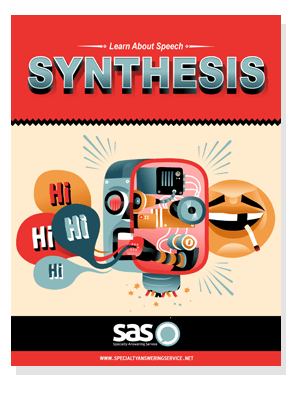- Log In
- Support
- Company
- Contact Us
- Live answers @ 1-888-532-4794
Learn about speech synthesis.
Speech synthesis is the artificial production of the human voice, and it is created by what is known as a speech synthesizer. Artificial speech can be synthesized from pre-recorded sounds (concatenative synthesis) or by reproducing the fundamental frequency and amplitude of the voiced sound (formant synthesis). The Voder, developed by Homer Dudley and based on Bell Laboratories’ vocoder, was the first fully functional voice synthesizer, demonstrated at the World’s Fair in 1939.
The two most important elements of speech synthesis are naturalness and intelligibility. Because concatenative synthesis is based on pre-recorded speech, it has an advantage when it comes to naturalness; however, formant synthesis is more intelligible than concatenative systems especially at high speeds, and it requires less storage space as no speech sounds database is necessary. These days, you will find speech synthesizers in the majority of computer operating systems; everything from voice enabled email to applications for those with visual impairments.
This white paper will explore the following:
- History of speech synthesis
- Different types of speech synthesis
- Shortcomings of the technology
- Common uses in today’s marketplace
How about a demo?
We'll show you how our web portal works and answer any questions you have about SAS.
Schedule a demo








